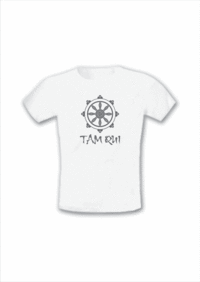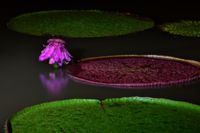Aksobhya Buddha
From Buddha World
In Vajrayana Buddhism, Akshobhya (Sanskrit for "Immovable One") (Japanese for Ashuku nyorai; Chinese: āchùrúlái; Mongolian for Ködelüsi ügei) is one of the Five Wisdom Buddhas, a product of the Adibuddha, who represents consciousness as an aspect of reality. By convention he is located in the east of the Diamond Realm and is the lord of the Eastern Pure Land Abhirati ('The Joyous'), although the Pure Land of Akshobhya's western counterpart Amitabha is far better known. His consort is Locana and he is normally accompanied by two elephants. His color is blue and his attributes include the bell, three robes, and staff, along with a jewel, lotus, prayer wheel, and sword. He has several emanations.
Origin
Akshobhya appears in the "Scripture of the Buddha-land of Akshobhya" (āchùfó guó jīng), which dates from 147 AD and is the oldest known Pure Land text. According to the scripture, a monk wished to practice the Dharma in the eastern world of delight and made a vow to think no anger or malice towards any being until enlightenment. He duly proved "immovable" and when he succeeded, he became the buddha Akshobhya. Akshobhya is sometimes merged with Acala (Japanese: Fudō myō-ō), whose name also means 'immovable one' in Sanskrit. However, Acala is not a buddha, but one of the Five Wisdom Kings of the Womb Realm in Vajrayana. Prior to the advent of Bhaisajyaguru (Yakushi), Akshobhya was the subject of a minor cult in Japan as a healing buddha, though even now both are found within the Shingon school of Buddhism in Japan. Recently, newly discovered Gandhari texts from Pakistan in the Bajaur Collection has been found to contain fragments of an early Mahayan sutra mentioning Aksobhya. Preliminary dating through paleography suggests a late first century to early second century AD provenance. More conclusive radiocarbon dating is underway. A complete analysis and report of the text is expected in late 2008.
Doctrine
Akshobhya is believed to transform the human failing of anger into a clear, mirror-like wisdom. With this wisdom, we see things just as they are, impartially and unaffectedly. A mirror will reflect both a red rose or a bloody dagger just as they are. Akshobhya’s blue color is closely linked to the mirror symbolism. Blue is the color of water, and water has the capacity to act as a clear mirror.
Iconography
Akshobhya makes the bhumisparsha mudra (earth touching gesture). This mudra suggests confidence, deep-rootedness, and the same kind of determination which carried the Buddha to his enlightenment, in spite of the numerous hurdles that stood in his path. Akshobhya’s emblem is the vajra, the symbol of Vajrayana, or tantric Buddhism. The vajra essentially symbolizes the essential qualities of enlightenment - the strength, power, and energy of the thunderbolt, and the brilliance, purity, and indestructibility of a diamond. That is why Akshobhya is depicted touching the earth with the fingertips of his right hand, just as Shakyamuni Buddha did when Mara "the evil One" confronted him at the Bodhi tree and tried to prevent him from reaching his goal of enlightenment. Touching the earth is a gesture of resolve. A vow to be as steadfast and immutable as the Earth itself. A commitment to find enlightenment and help eliminate the suffering of all beings. Akshobhya’s mount is the elephant. An elephant places its foot upon the earth with unshakeable certainty. It has the same unalterable quality as the Buddha’s fingers touching the ground, and the same determination that carried the Buddha through his tribulations. Akshobhya is the embodiment of mirror knowledge. A knowledge of what is real, and what is illusion, or a mere reflection of actual reality. The mirror is mind itself - clear like the sky, empty yet luminous. Holding all the images of space and time, yet untouched by them. He represents the eternal mind, and the Vajra family is connected with reason and intellect. It's brilliance illuminates the darkness of ignorance, it's sharpness cuts through confusion. The Vajra family, to which Akshobhya belongs, is associated with the element of water. This is why the two colors of Vajra are blue or white. Bright white like sun reflecting off water, and blue, like the depths of the ocean. Even if the surface of the ocean is blown into crashing waves, the depths remain undisturbed, imperturbable. And though water may seem ethereal and weightless, in truth it is extremely heavy. Water flows into the lowest place and settles there. It carves through solid rock, but calmly, without violence. When frozen, it is hard, sharp, and clear like the intellect, but to reach it's full potential, it must also be fluid and adaptable like a flowing river. These are all the essential qualities of Akshobhya. Many wrathful tantric beings are represented as blue in color because they embody the transmuted energy of hatred and aggression, into wisdom and enlightenment.











 Русский
Русский
